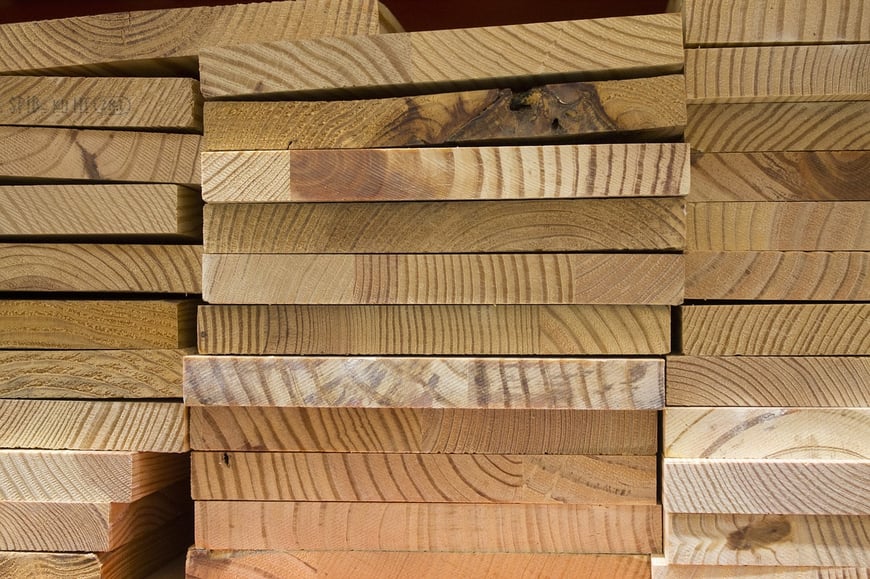
Choosing quality materials is a critical part of any construction project. Whether you're building a custom commercial structure, a pole barn, or a hobby shop, understanding the types of lumber available—and the pros and cons of each—can significantly impact your building’s performance, cost, and longevity.
Let’s break down the difference between softwoods and hardwoods, the best types of softwoods for post-frame construction, and how Pro-Line Building Company uses reliable materials to deliver strong, durable buildings across Iowa.
Softwoods vs. Hardwoods: What’s the Difference?
Lumber falls into two main categories: softwood and hardwood.
Softwoods, such as pine and fir, are the go-to choice for most post frame building projects. They're more affordable, widely available, and easier to work with than hardwoods. You'll commonly find softwoods used in framing, siding, and general construction.
Hardwoods, like oak and maple, are denser and more durable but come at a higher cost. They're better suited for flooring, cabinetry, and high-end finish work. Since hardwood trees take longer to mature, their lumber is typically more expensive and less readily available in large quantities.
For most builders in Iowa—especially those working on pole barns, municipal structures, or farm storage buildings—softwoods are the practical, high-performance choice.
The Best Softwoods for Construction
Southern Yellow Pine
Southern yellow pine is one of the strongest and most reliable softwoods used in construction. It's dense, cost-effective, and grows abundantly in the southern U.S., making it a great American-made option. It holds fasteners well, treats easily, and offers excellent strength for framing. That strength means builders can often use less wood without sacrificing stability.
At Pro-Line, we use southern yellow pine in our structural framing and laminated wall columns because of its durability, consistency, and long-term performance.
Eastern White Pine
Eastern white pine is another popular softwood. While it’s not as strong as southern yellow pine, it’s lightweight and easy to work with. It’s often used for paneling, moldings, and light interior applications. If aesthetics matter for your project, white pine delivers a clean, attractive finish.
Western Pines
Western pines include species like ponderosa, sugar pine, and Idaho white pine. These softwoods are known for their light color and smooth grain. Ponderosa pine is commonly used for cabinetry, shutters, and other precision woodwork. While they’re great for decorative purposes, these species aren’t typically used for structural framing due to their lower strength rating.
Pro-Line’s Material Standards
When you work with Pro-Line, you’re getting more than just a builder. You’re getting a team that puts material quality first. Our framing uses southern yellow pine, and we reinforce our structures with laminated wall columns designed to resist cracking, splitting, and weathering.
We also use three- and four-ply laminated foundation columns that hold up against tough Iowa conditions and ensure your building’s integrity for years to come. These materials are used across our projects, whether we’re building hobby shops, commercial buildings, or post frame barns.
You can see how this commitment to quality comes to life in our project portfolio.
Why Material Quality Matters
The materials you choose don’t just affect your building today—they shape how it performs for years to come. Investing in quality lumber, especially for framing and foundations, helps your structure resist the elements, reduce maintenance, and deliver long-term value.
At Pro-Line, we make sure every building meets our high standards for performance, whether it’s for a municipality, a commercial operation, or a private landowner.
Ready to Build With Confidence?
At Pro-Line Building Company, we’ve helped clients across Iowa build smarter with strong materials, expert crews, and a commitment to doing things right. Whether you’re working on a post frame building, a pole barn, or a custom commercial structure, our team is here to make the process smooth, efficient, and worry-free.
.svg)